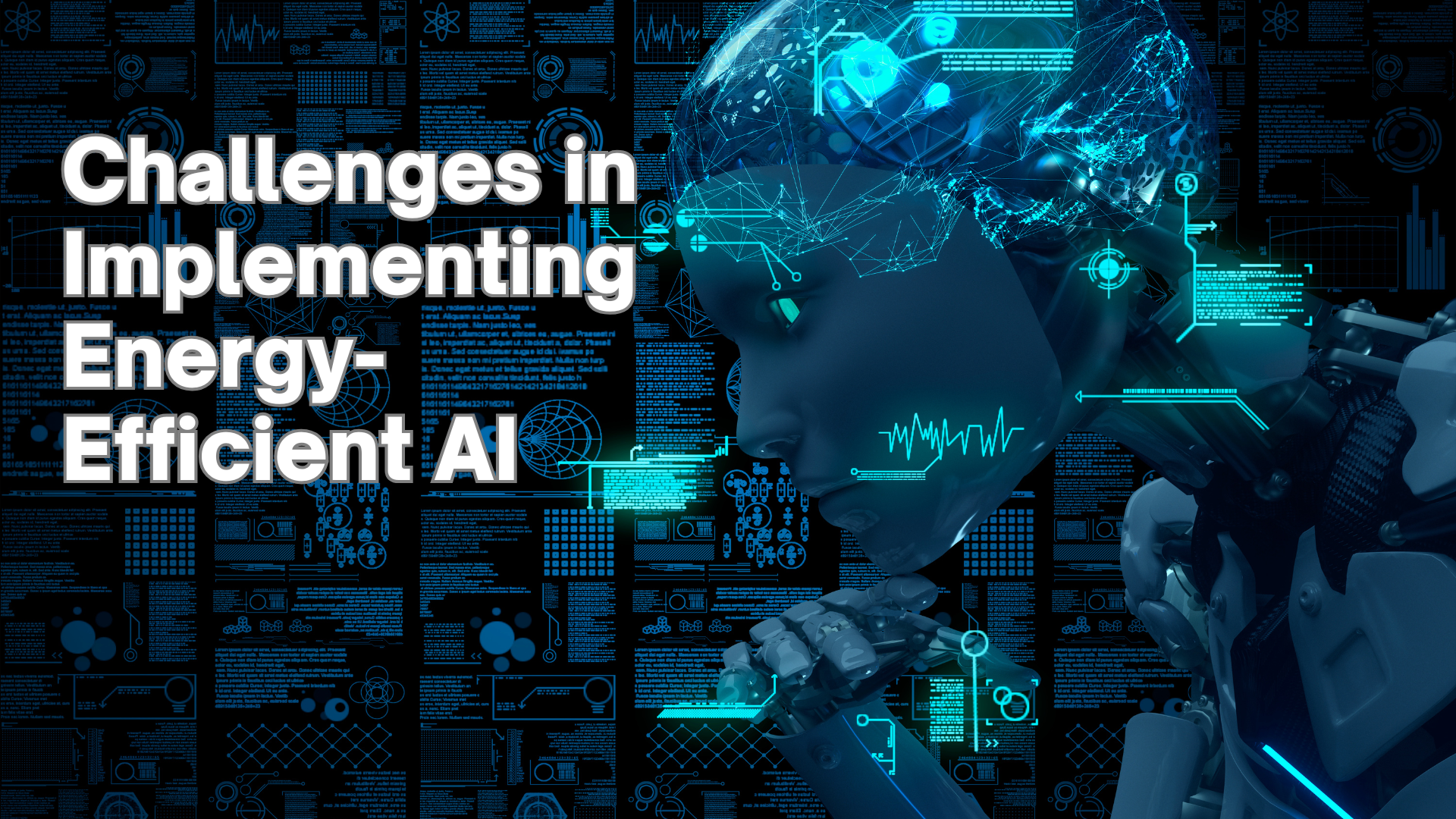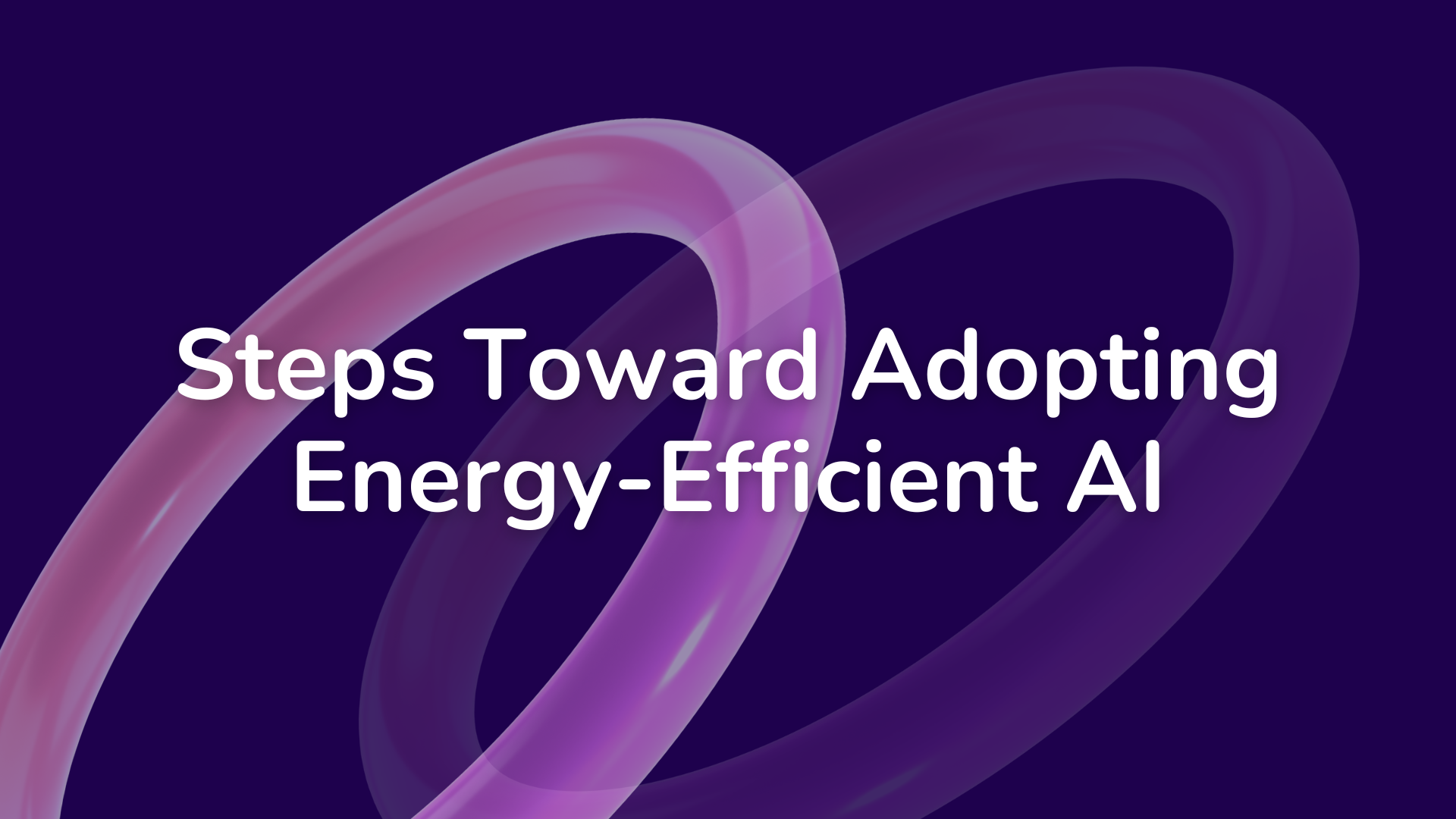The rise of artificial intelligence (AI) has brought transformative changes to industries, reshaping everything from healthcare to transportation. However, as AI systems grow more powerful and complex, their environmental footprint has come under scrutiny. Training large-scale machine learning (ML) models consumes vast amounts of energy, contributing significantly to carbon emissions. In this context, energy-efficient AI solutions are emerging as a critical approach to making machine learning sustainable while minimizing its environmental impact.
This article delves into the significance of energy-efficient AI, explores innovative solutions, and highlights how these efforts contribute to sustainability.
Why Energy Efficiency in AI Matters

Rising Energy Demands of AI
Training modern AI models, such as OpenAI’s GPT-4 or Google’s BERT, requires immense computational resources. For instance, training GPT-3 consumed enough electricity to power a small town for several weeks. As AI applications expand, so does the energy demand, leading to increased environmental strain.
Carbon Emissions from AI Systems
Data centers housing AI workloads are responsible for approximately 2% of global carbon emissions, rivaling the aviation industry. Without intervention, the carbon footprint of AI is expected to grow as AI adoption accelerates.
Ethical and Economic Implications
Energy-efficient AI aligns with global sustainability goals, such as those outlined in the Paris Agreement. It also reduces operational costs for organizations, offering both ethical and financial incentives for businesses to adopt green AI practices.
Key Strategies for Energy-Efficient AI Solutions
Algorithm Optimization
Efficient algorithms form the backbone of energy-efficient of AI. Techniques such as pruning, quantization, and knowledge distillation help reduce the computational complexity of ML models.
- Pruning: Removes redundant neurons or parameters from a model, reducing its size without significantly affecting performance.
- Quantization: Lowers precision levels in computations, enabling faster processing and reduced energy usage.
- Knowledge Distillation: Transfers knowledge from a large model to a smaller one, retaining performance while reducing resource requirements.
Hardware Innovations
Developing energy-efficient hardware is essential to support sustainable AI practices.
- Graphics Processing Units (GPUs): Modern GPUs are optimized for AI workloads, offering better energy efficiency than traditional CPUs.
- Tensor Processing Units (TPUs): Custom hardware like Google’s TPUs is designed specifically for AI tasks, significantly reducing energy consumption.
- Neuromorphic Chips: Inspired by the human brain, these chips mimic neural activity and consume minimal energy for AI computations.
Edge Computing
Edge computing processes data locally on devices instead of relying on centralized data centers. This reduces energy usage by minimizing data transfer and enabling real-time processing.
- Examples: Smart home devices, autonomous vehicles, and industrial IoT systems benefit from edge computing’s efficiency.
Renewable Energy for AI Workloads
Shifting data centers to renewable energy sources such as solar, wind, or hydroelectric power is a critical step toward sustainable AI. Leading tech companies like Google and Microsoft have committed to operating carbon-neutral data centers.
Federated Learning
Federated learning trains AI models across multiple decentralized devices without transferring raw data to a central server.
- Advantages: Reduces energy consumption by distributing computational load.
- Use Cases: Healthcare, finance, and mobile applications leverage federated learning for secure, efficient AI training.
Energy-Efficient AI in Practice
Green AI Initiatives by Tech Giants
- Google: Pioneered the use of AI to optimize energy usage in its data centers, achieving a 40% reduction in cooling costs.
- Microsoft: Committed to being carbon-negative by 2030, with AI-powered systems managing energy efficiency in its operations.
- NVIDIA: Develops energy-efficient GPUs and collaborates with researchers to optimize AI workflows.
Sustainable AI Startups
Innovative startups are leading the charge in energy-efficient AI solutions:
- Cerebras Systems: Focused on energy-efficient AI chips.
- Carbon Relay: Helps organizations optimize energy usage in data centers.
- Perceive: Develops ultra-low-power chips for AI applications on edge devices.
Academic Research
Universities and research institutions are exploring energy-efficient AI techniques, such as lightweight models and adaptive training methods. Projects like MIT’s Green AI focus on developing sustainable AI practices.
Challenges in Implementing Energy-Efficient AI

Balancing Efficiency and Performance
Reducing energy consumption often comes at the cost of model accuracy or performance. Striking the right balance is a significant challenge for researchers and practitioners.
Lack of Standardization
There are no universally accepted benchmarks for measuring the energy efficiency of AI systems, making it difficult to compare and improve solutions.
High Initial Costs
Adopting energy-efficient hardware or transitioning to renewable energy sources requires significant upfront investment, which may deter smaller organizations.
Limited Awareness and Expertise
Organizations often lack the knowledge and expertise to implement energy-efficient AI practices effectively. Training and awareness programs are essential to bridge this gap.
Future Trends
AI-Powered Energy Optimization
AI itself can be used to optimize energy usage in various domains, such as:
- Smart Grids: Managing energy distribution efficiently.
- Building Management: Reducing energy consumption in commercial and residential properties.
Development of Ultra-Low-Power AI Chips
Chip manufacturers are investing in ultra-low-power designs to support AI applications without compromising efficiency. Examples include ARM’s energy-efficient processors and IBM’s AI-accelerated chips.
Collaboration Between Industries
Cross-industry collaborations will be key to developing and deploying sustainable AI solutions. Tech companies, governments, and academia must work together to drive innovation.
Policies and Regulations
Governments worldwide are expected to introduce policies encouraging energy-efficient AI practices, such as tax incentives for green initiatives and stricter energy consumption standards for data centers.
The Role of AI in Fighting Climate Change
Monitoring Environmental Changes
AI systems analyze satellite imagery and sensor data to track deforestation, glacier melting, and ocean temperatures.
Optimizing Renewable Energy
AI improves the efficiency of renewable energy sources by predicting weather patterns and optimizing energy storage systems.
Advancing Carbon Capture Technologies
AI-driven models identify optimal locations for carbon capture and improve the efficiency of sequestration processes.
Steps Toward Adopting Energy-Efficient AI

- Evaluate Current Energy Usage: Conduct audits to identify areas of inefficiency in AI operations.
- Invest in Energy-Efficient Hardware: Transition to GPUs, TPUs, or neuromorphic chips designed for AI workloads.
- Optimize Algorithms: Implement techniques like pruning and quantization to streamline models.
- Adopt Edge Computing: Process data locally where possible to minimize energy costs.
- Leverage Renewable Energy: Transition data centers and operations to sustainable energy sources.
- Collaborate on Research: Partner with academic institutions and industry leaders to stay updated on the latest energy-efficient AI innovations.
Conclusion:
Its solutions are crucial for addressing the environmental impact of growing AI applications. By optimizing algorithms, adopting energy-efficient hardware, leveraging edge computing, and transitioning to renewable energy, organizations can balance the benefits of AI with the need for sustainability. While challenges remain, the collaborative efforts of tech companies, researchers, and policymakers offer hope for a greener future powered by AI. As we strive toward energy efficiency, the potential of AI to both innovate and protect our planet becomes increasingly evident.
FAQs
What is energy-efficient AI?
Energy-efficient AI refers to practices and technologies that reduce the energy consumption of AI systems, making them more sustainable and environmentally friendly.
How do AI systems impact the environment?
AI systems consume significant energy during training and operation, contributing to carbon emissions and increasing the environmental footprint of data centers.
What are some examples of energy-efficient AI techniques?
Techniques like algorithm pruning, quantization, and knowledge distillation help reduce the computational complexity and energy usage of AI models.
How can renewable energy support AI operations?
Data centers powered by renewable energy sources like solar or wind can drastically reduce the carbon footprint of AI workloads.
What role does edge computing play in sustainable AI?
Edge computing processes data locally, reducing the need for energy-intensive data transfers to central servers and enabling real-time decision-making.
